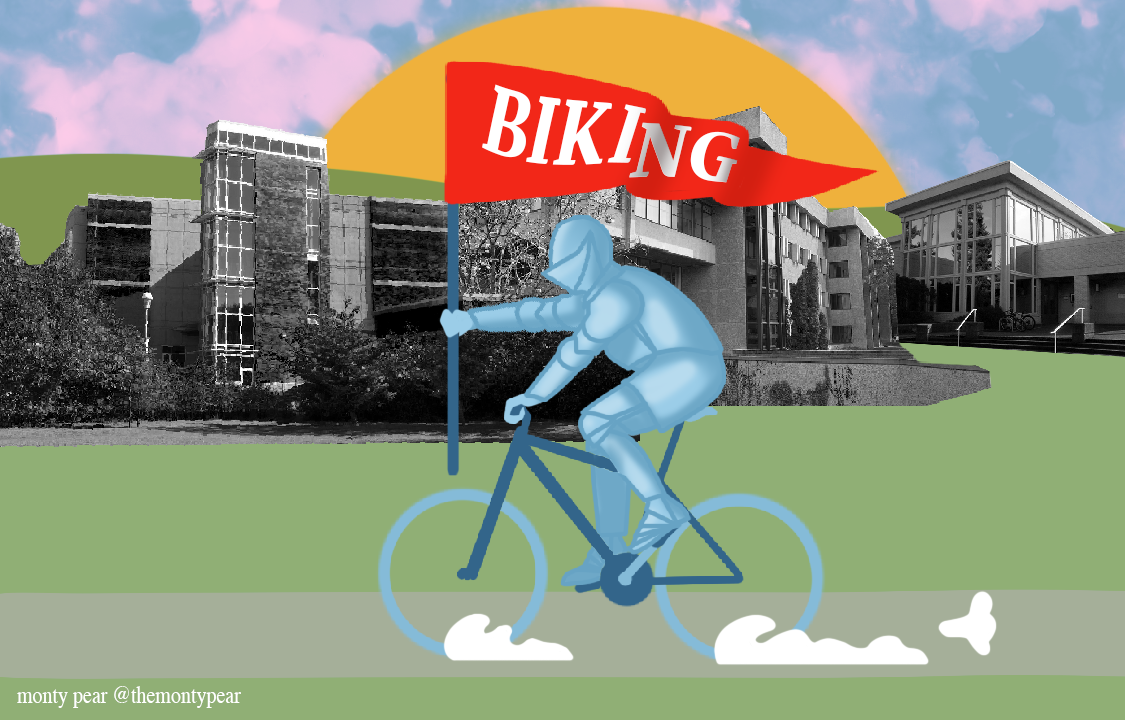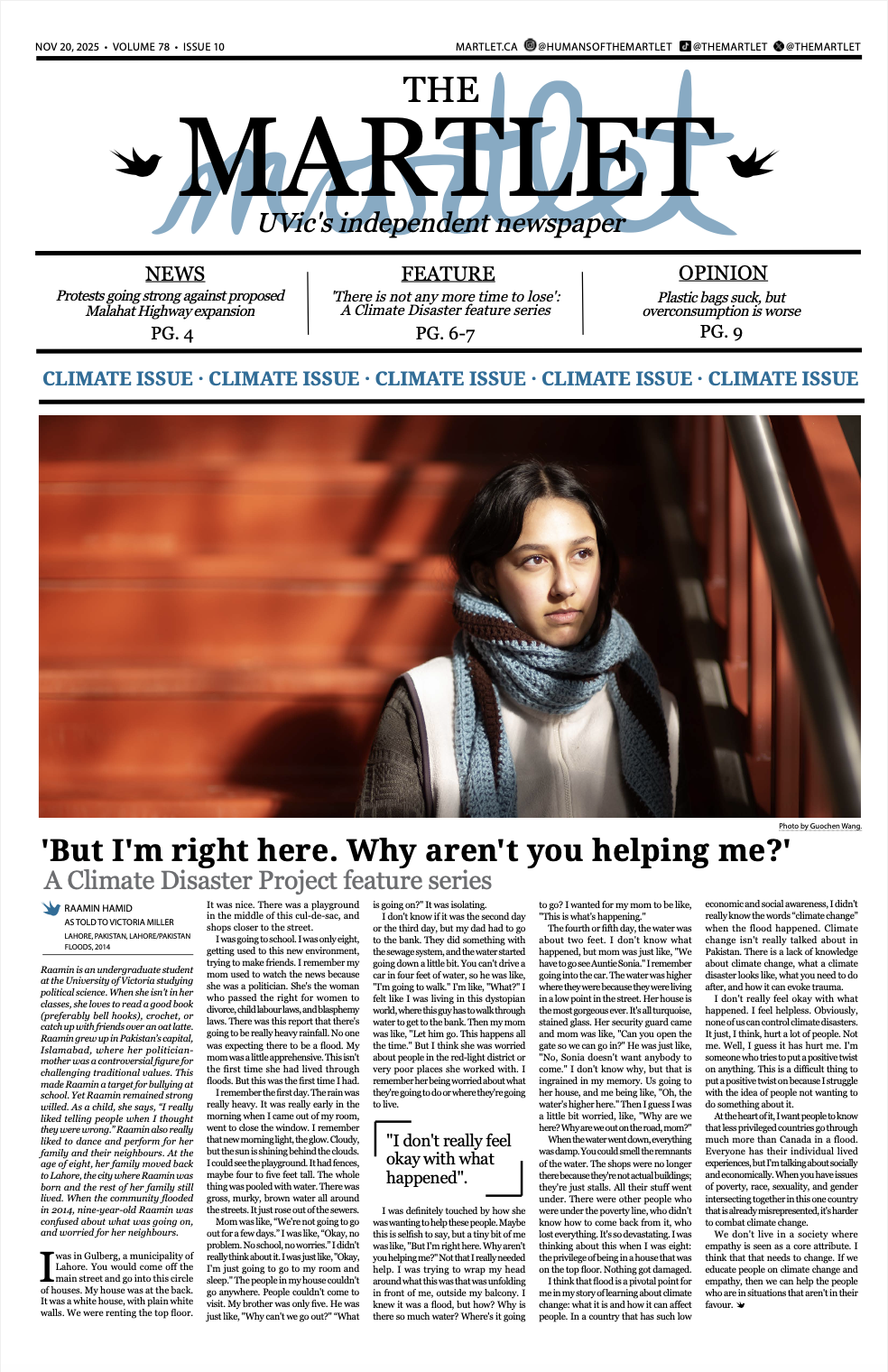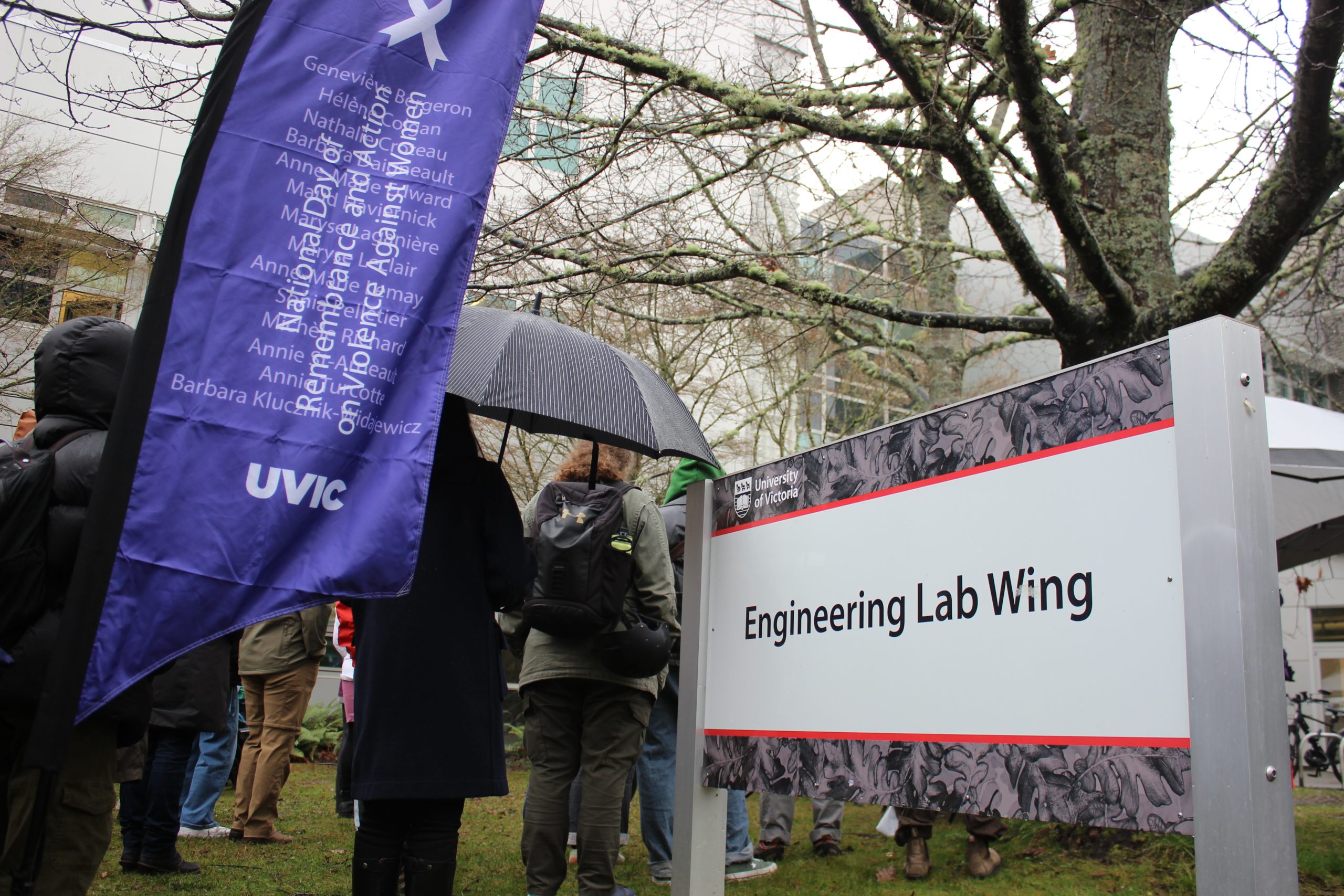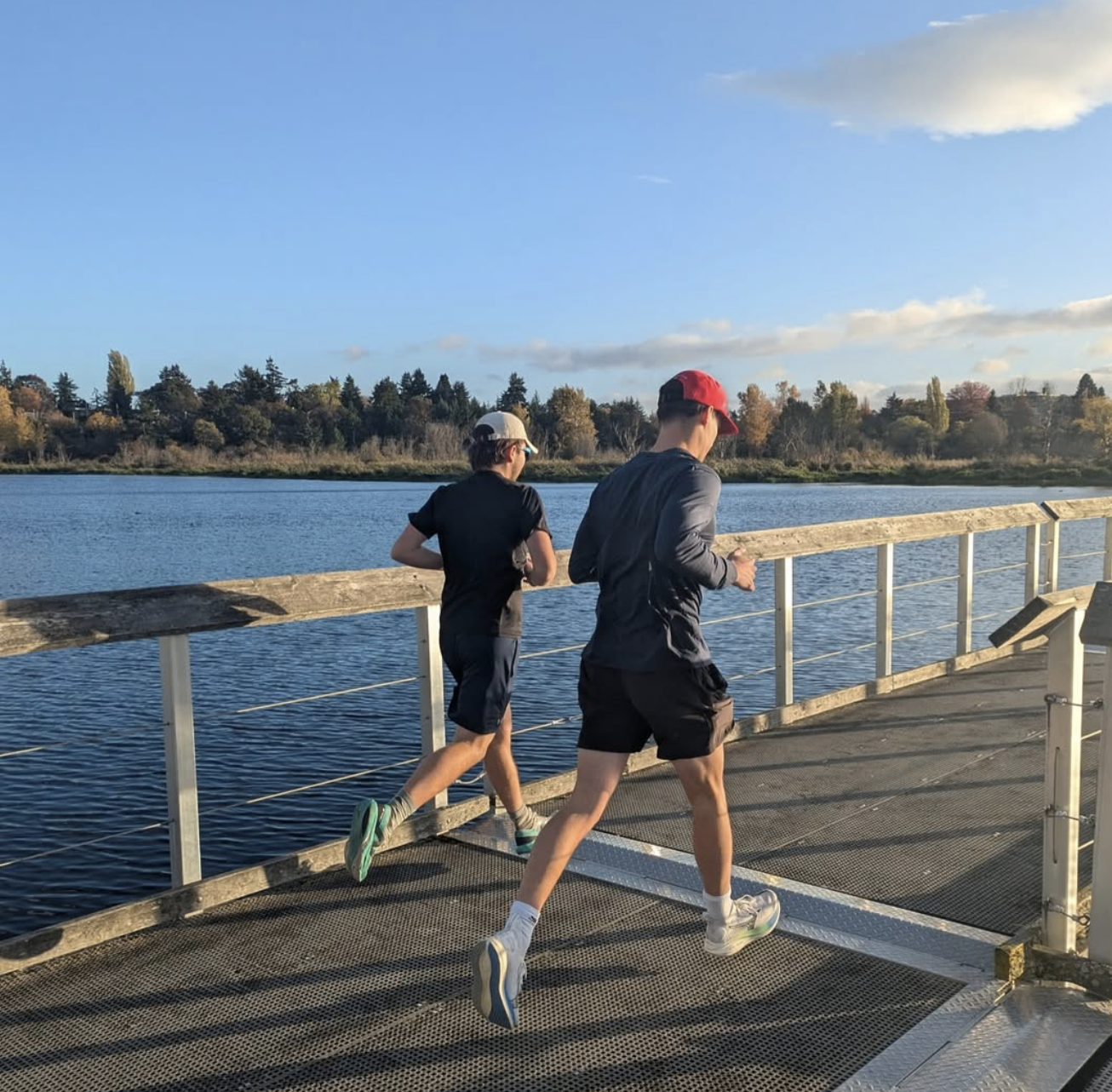Who actually has the right of way on campus?

Graphic by Monty Pear.
Picture this: you just completed a few hours of morning studies at McPherson Library. Ready for lunch, you step out to a clear-skied January afternoon, and make your way down the crowded pathway toward The Cove.
Walking behind a large group of people, you step to the side to pass. In that same instant, brakes screech and a cyclist skids past — acrobatically swerving to avoid crashing into you and another pedestrian. The cyclist pedals on without so much as a look behind them.
Do you yell after them? Hurl your water bottle? No. That would be unhinged.
But that was my initial impulse last week when this happened to me. Instead, I stood frozen for a moment and exchanged glances with the other student involved in the near miss. Then, without a word, we continued on.
Cyclist–pedestrian incidents are so common that we barely acknowledge them anymore.
While last week’s incident was my first close-call with a cyclist on campus, I’ve witnessed similar scenes play out before at UVic. After lamenting my experience to others, it became apparent that cyclist–pedestrian near misses — and even collisions — are common on our campus.
But why? And who’s most at fault?
According to UVic’s Campus Cycling Plan, all areas within Ring Road — and especially the Quadrangle — are labelled “Shared Space,” where the pedestrian is considered the primary user, and has the right of way. “Shared Spaces” are also slow zones, where cyclists are expected to monitor their speed.
So, it appears, the burden of safety falls on two parties. First, the cyclist: there is always room for common sense, and as someone who cycles to the campus myself, it’s easy to assess when it’s appropriate to dismount or adjust my speed. Basically, if it’s crowded and you need to swerve through pedestrians, just get off the damn bike.
Second, though, UVic needs to do a better job communicating safety expectations for these shared pathways.
In 2019, UVic implemented the Campus Cycling Plan (CCP). At its core, the CCP was developed to help UVic reach its goal of 70 per cent of all transportation to campus being sustainable — a perfectly admirable motive. And to accommodate a bicycle-friendly campus, one of the plan’s guiding principles is that bikes are allowed to be ridden everywhere. However, the CCP simultaneously acknowledges the catch-22: “multi-use pathways and high traffic areas [show] a large potential for negative pedestrian-cyclist interactions.”
Thus, strategy two of the plan was created: “Shared Space and Safety.”
Strategy two includes several recommendations for how UVic can manage both cyclist and pedestrian safety, including speed management actions such speed bumps, planters, or other physical barriers, a maximum speed limit of 15 kilometres per hour, and additional signage.
These are just a few recommendations from strategy two, but they are just that — recommendations. Almost six years after UVic implemented the CCP, only some of the safety measures have been actualized.
In a statement to the Martlet, a UVic spokesperson said that prominent signage reminding riders to slow down and watch for pedestrians has been installed where all new cycling corridors enter campus, including the West Campus Greenway, University Drive Connector, Dawnview Crescent corridor, Gabriola Road, and McGill Road.
To be honest, I don’t recall noticing the “slow zone” signage when biking to campus — and I definitely wasn’t aware of the designated Shared Space. Sure, maybe I’m less observant than other cyclists, but ideally I’d like more prominent signage in high-density areas like the Shared Space, not just at the corridor entrances.
The areas within the Quadrangle and within Ring Road have the most potential for cyclist–pedestrian conflict. Wouldn’t it make sense for the most visible signage, communicating “slow zones,” or “dismount when busy,” to be included in these areas, too?
Connor Stokes is a UVic student who was struck by a cyclist last semester when he was walking from the Elliot Building to the Engineering and Computer Science Building. This is a part of campus that is considered Shared Space, but doesn’t feature any prominent slow zone signage.
“Being at a transition period [between classes], the area was incredibly busy, so I was sort of weaving through the crowd,” said Stokes. “I got hit right in the back by a girl on a bike. No yelling, no bell, no indication that someone was there.”
Thankfully, neither Stokes nor the cyclist were injured in the collision.
Despite the accident, Stokes said he has no issue with people biking on campus. “Some of those buildings are really far apart and it can be a struggle to get to them within the ten minute transition.”
However, Stokes wants cyclists to recognize that the majority of people on campus are walking. “I’ve witnessed other close calls and incidents on campus,” he said. “So it’s certainly something that should be addressed.”
As of now, UVic partners with Capital Bike twice per year to provide cycling safety resources on campus, including best practices for Shared Spaces. While this is a start, many cyclists likely miss these isolated events. UVic needs additional strategies for communicating this information to students, either through social media campaigns, or semi-regular email communications.
A UVic spokesperson added that implementation of the CCP is ongoing, and that “staff are monitoring the use and behaviours of Shared Spaces on campus to determine locations where further safety improvements are required, including slow zone markings, signage and wayfinding.”
I know the spokes of change turn slowly, especially at a university navigating a limited budget. But when it comes to the safety of students simply trying to get to their next class, do better UVic.
Increase signage, implement the safety and speed management recommendations from your six-year-old Cycling Plan, and make sure cyclists know what’s expected of them.
And for the cyclists out there: What’s the rush?








